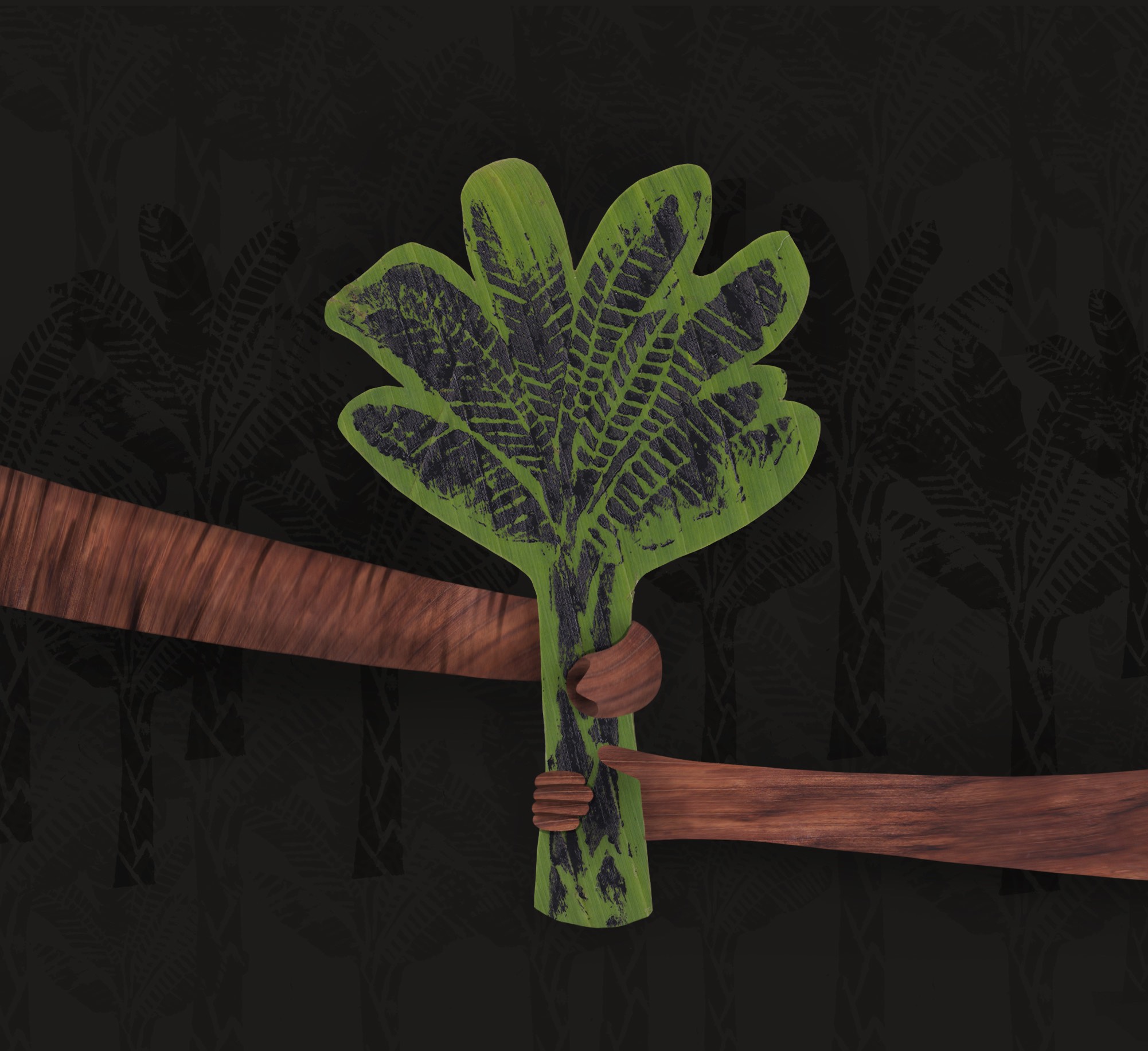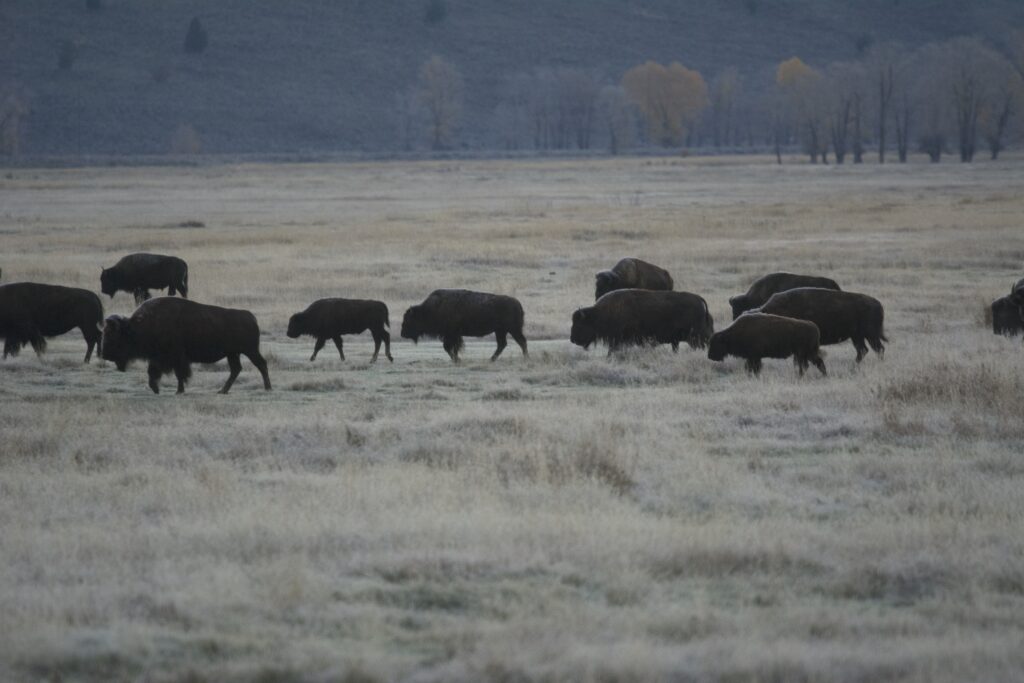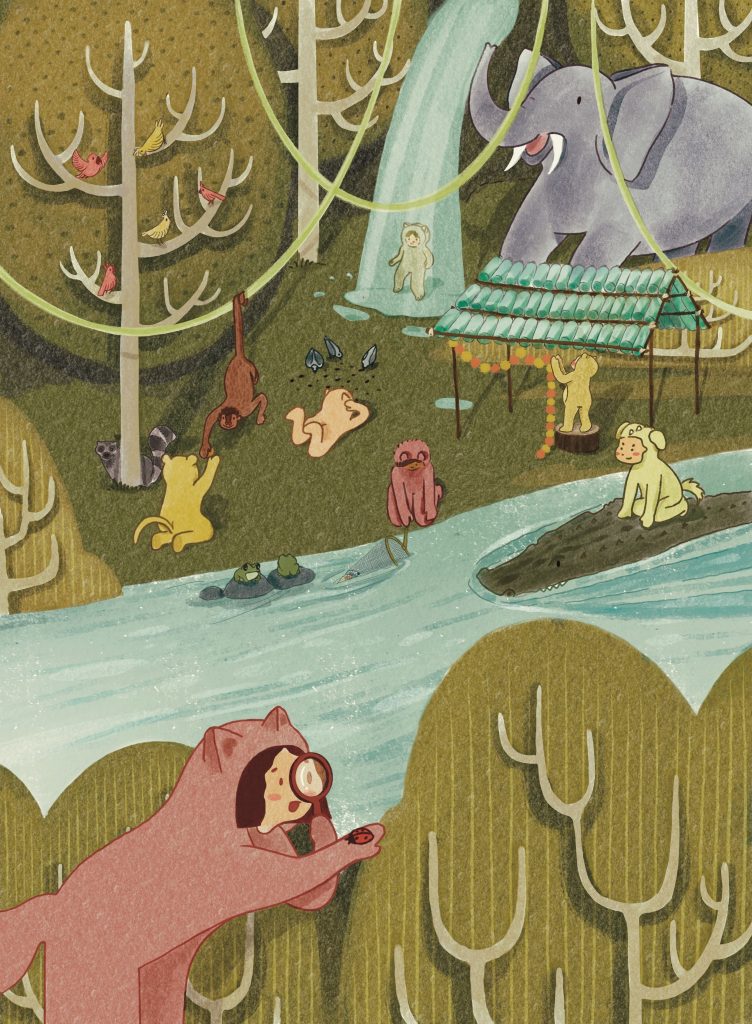Illustration: The Big Banana Fight by Deepika Nandan, Linoprint on banana leaf and digital illustration, September 2021
Traversing matrilineal passages
tracking place memory linked instinct and senses
their movements architect forests, shape ecosystems in footsteps
collecting rainfall, becoming a breeding ground for the opportunistic and the connected
participants in a long journey, over millennia; who can blame the herd for desiring
the cultivated, the cared for, the hybridized, the ubiquitous, the available
an archetypal accessory for troublesome primates in weekend cartoons:
our food, our cookware, our shelter, our livelihood, our ceremony, our community
so essential we’ve hybridized the plant into sterility
protected it from raids with capture, poisoning, electrocution
when orderly plantations fragment migratory paths
conflict escalates frequently and urgently; fatalities accumulate across species
survival requires we mirror their adaptive, intergenerational wisdom
survival requires we coexist alongside
– Jeanne Dodds
About this work:
Jeanne Dodds and Deepika Nandan have each written a descriptive ekphrastic poem in response to one another’s artworks. The guiding concepts linking both works of art and writing are the parallels between conflict and coexistence models across two unique species and locations. Jeanne’s work is informed by and critiques policies of grey wolf conservation in the United States, while Deepika’s visual work describes aspects of her research around the Asian elephant. This was part of a year-long collaboration as participants in the Creature Conserve Mentorship program, which is designed to provide a support system for artists, creative writers, and scientists as they collaborate and explore the human connection to nature, creating new pathways to a healthier world for all creatures
Read the other poem and artwork pair here.
More about the ‘Asian Elephant Conflict to Coexistence’ project:
As the habitat of Asian elephants shrinks, tensions caused by human-elephant conflict cause immense economic and emotional stress to communities that live alongside megaherbivores. This conflict has claimed the lives of not only elephants, but also people, with estimates ranging from 100–300 people and 40–50 elephants killed annually in India. Given this context, understanding the impact of conflict on communities and ideating ways in which coexistence can be promoted is crucial. Exploring the material use of damaged crops, my work aims to shift human-elephant interactions from conflict to coexistence and ensure our harmonious living with these gentle giants.
Please visit Creature Conserve’s resource page on Human-Elephant Coexistence to learn more:
https://creatureconserve.com/human-elephant-coexistence
– Deepika Nandan




